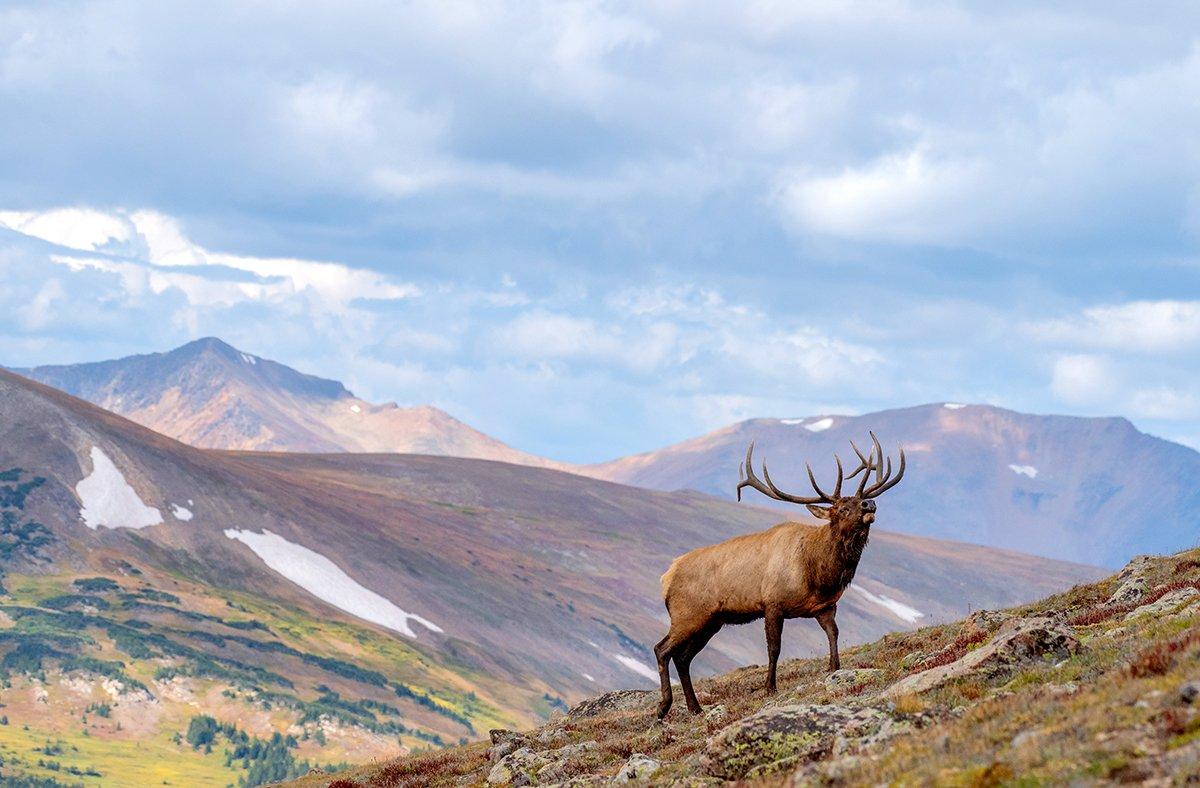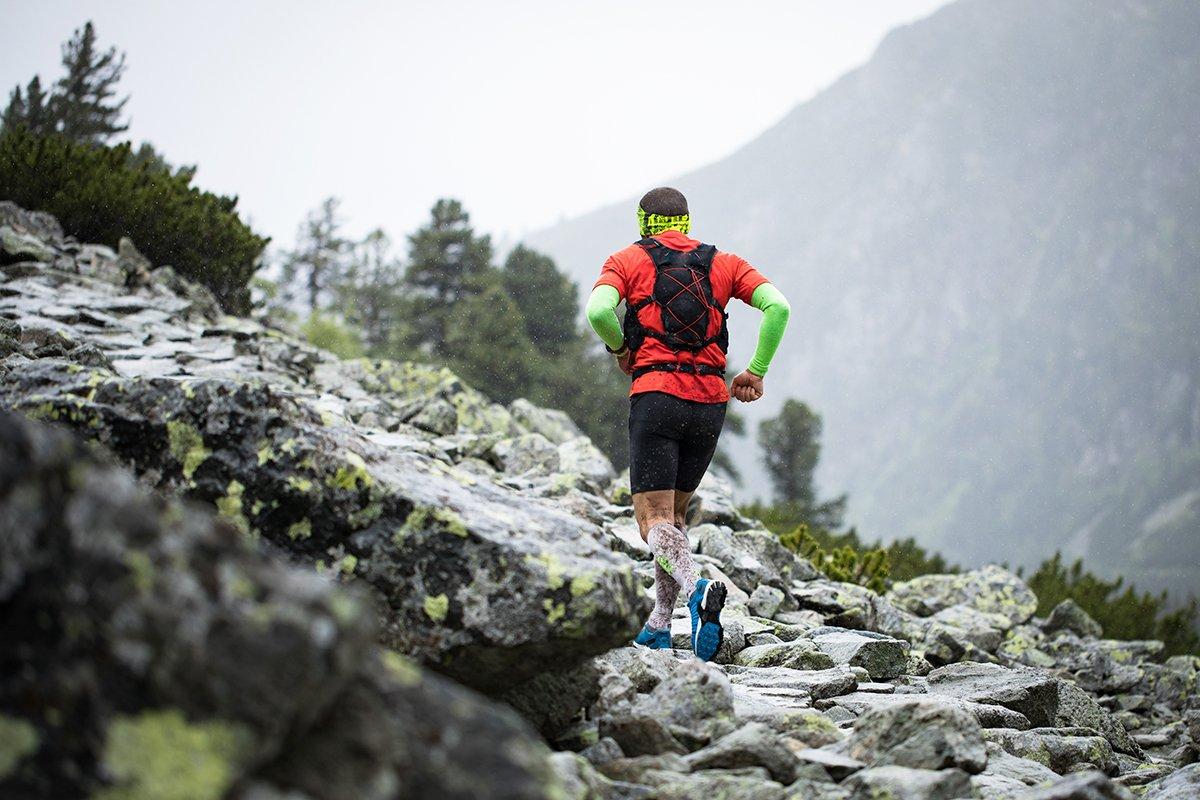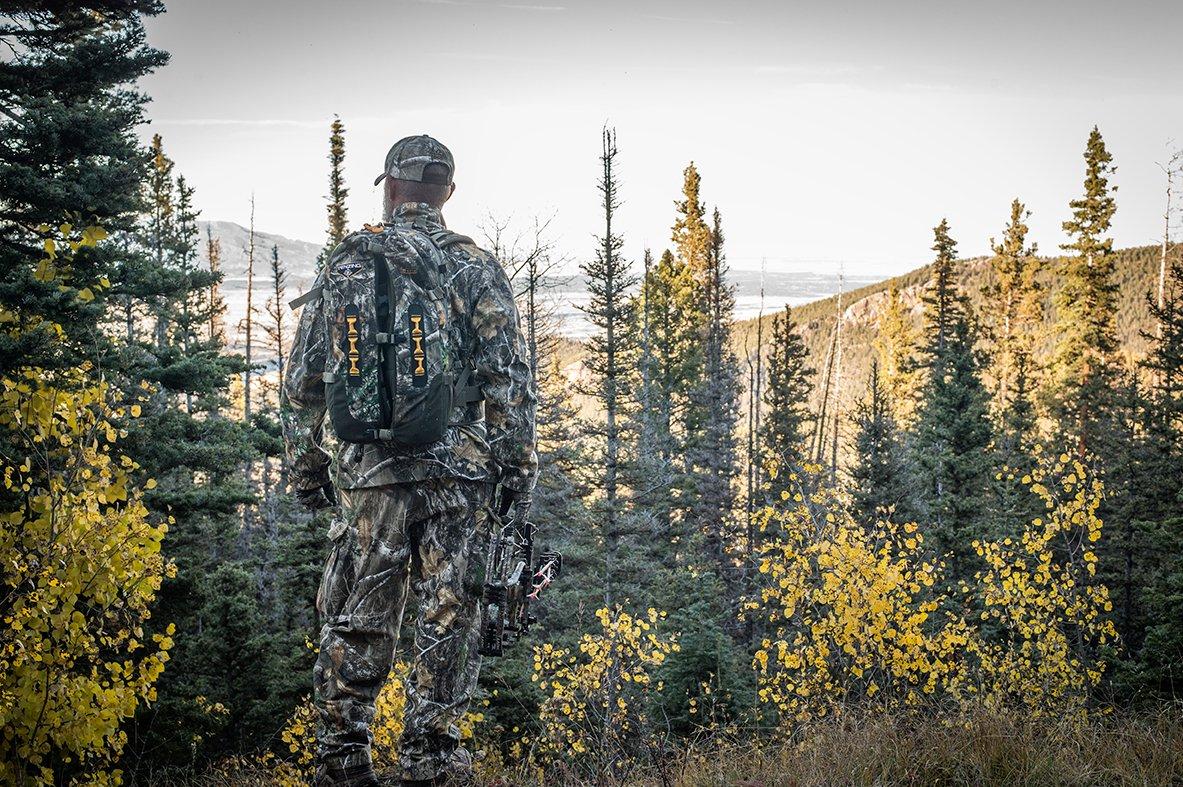Archery elk hunting is notoriously tough. Here's how to be at your best for bugling bulls this September
The action was intense. Two bulls were screaming, and my heart was slamming inside my chest. A steady rain was falling, and each step I took to gain elevation and close the distance was a struggle. Mud was building on my outsoles, and on the slippery slope I had all the balance of a first-time ice skater. I was soaked and chilled to the core, but I knew if I could overcome the discomfort, I'd get my chance at an elk. I kept pushing.
The chase ended around midmorning when the herd bull nudged the satellite away from his cows. The satellite was a solid 6x6, and he walked by me at 30 yards. I was so cold and wet that I was already shivering well before he appeared. I completely blew the shot. Adding insult to injury, the herd bull strolled by immediately after, and there was no time to nock another arrow.
Just like that, the bugling festival ended with my face buried in my hands. I was disgusted.
Few things can excite a bowhunter like a bull elk bugling at less than 40 yards. But that's an elusive scenario.
Elk hunting is one of North America's top bowhunting challenges. For Easterners, just reaching elk country requires a tedious 15- to 24-hour drive. And then you don't get a break, unless you purposely take one, until your hunt concludes. Day after day of rising at 4 a.m. and giving it your all in challenging terrain takes a toll on you, mentally and physically.
I've hunted elk a bunch over the last decade, and have tagged four of them. I've found success as early as day two and as late as day 25. I once had a 20-day hunt end without an elk. I've made some really good decisions, but I've also made lots of mistakes. One thing is for certain: most elk hunts demand everything you have to give mentally and physically. That's why preparation is so important.
Following are what I consider the top six tips to prepare for an elk hunt. Let's review.
(Don't Miss: How to Recover a Wounded Elk)
1. Train … Hard
If you want to be an effective elk hunter, you have to be in shape. Training is non-negotiable. So what workouts are best? First, you must have strong, stable legs. Good exercises are squats and running on a stair stepper. Next, a tight core will improve your stability, especially as you maneuver through challenging terrain with a heavy pack on your shoulders. Then, you must have a strong back and shoulders to withstand the pack's payload. These are the minimums.
Don't forget cardio, either. Mountain air adds difficulty to breathing when you're merely walking. When you start dogging after elk, that difficulty multiplies. For that reason, lung power is crucial to staying in the hunt. Running on a treadmill is better than nothing, but if you have the ability, throw on your elk-hunting pack (loaded) and start hiking up and down the steepest terrain you can find near home. Start small, and then push yourself just a bit harder each day.
While training is important for staying on elk in unforgiving terrain, it becomes even more beneficial when you shoot an elk. You'll be faced with hauling hundreds of pounds of meat from the kill site back to camp or your vehicle. I've done plenty of physically demanding tasks in my life, but I learned during my first elk pack-out that few things are harder than carrying a 70- to 100-pound pack of meat for a couple miles through brushy, up-and-down terrain. And I was in the best shape of my life at that time.
Do yourself a huge favor and train hard during the months leading up to your hunt. It will make everything far more manageable.
2. Do Your E-Scouting
Especially when hunting a new area for the first time, e-scouting via onX Hunt is extremely important. This might not seem like a big preparation item for elk, but it is, and here's why. When weather is warm in September, elk love dark timber on north-facing slopes at approximately 7,500-10,000 feet of elevation. If there's a creek or spring in the vicinity, even better. Drop waypoints on said locations well before your hunt.
If you don't do this, you'll spend a lot of time hiking blindly in areas void of elk. It's senseless. Not only does it waste precious time, but it demands great effort with minimal return. Put time into e-scouting and identify potential elk hideouts so that you can focus your effort on something that counts instead of futile jaunts.
(Don't Miss: 10 Elk Calling Mistakes That Can Cost You a Bull)
3. Practice Difficult Shooting Scenarios
If you spend the summer shooting your deer target out to 40 yards on flat ground and think you'll easily hit an elk's gigantic lungs, get real. Mediocre football kickers can usually nail a 40-yard field goal during practice. When it's game time, though, and the crowd is roaring and pressure to produce is mounting, it's easy to kick wide right or left. Elk hunting is like that, too.
A high percentage of elk shot opportunities happen in steep terrain and in thick cover. Add to those challenges a spiked pulse and breathing rate, and now you're facing a far more difficult target than you realize. Oh, and don't forget the heavy backpack altering your balance.
To truly prepare your shooting skills for the real thing, you must practice realistic scenarios. First, don't shoot at targets in the wide open. Place the target so that obstructions cover it slightly. Take it a step further, allowing so many obstructions that if you miss even slightly, you'll hammer a branch and lose or wreck the arrow. Make it so that missing has consequences, and it will instill a new level of focus and confidence when you ace those shots repeatedly.
Also, add steep inclines and declines to your practice regimen. If you don't, your shooting form will almost definitely compromise when you shoot at an elk. Practice bending at the waist, keeping your anchor and your upper-body form consistent.
Next, shoot at double the distance you plan to shoot at an actual bull. It will simplify shorter shots tremendously. Also, it's important to have the skill to place an arrow at 80 to 100 yards in the event that your first hit is marginal. Sending a second arrow into a wounded bull dramatically increases your odds for a recovery.
Finally, increase your heart rate while practicing to replicate the shaky sight picture you'll probably see under hunting conditions. Either set your bow down and sprint for 50 or 60 yards, then pick it up and shoot, or do some pushups or burpees prior to shooting.
4. Tweak Your Sleep Schedule
If possible, tweak your sleep schedule prior to your hunt. Start rising at the time you'll be rising during your hunt for a week prior to your hunt. Likewise, head for bed earlier than usual. It will start to feel natural and lessen the effects the transition will have when you begin your hunt.
(Killer Buy Alert: Timber Camo Pro Performance Osprey Vest)
5. Improve Hydration
Few people can truthfully say they drink enough water. But in the mountains, if you're even moderately dehydrated prior to your hunt, you won't have the endurance and stamina to keep pushing. Before your hunt, remember to drink water and then drink some more. During your hunt, have a good-sized hydration pack and do likewise. Your energy and wellness during the hunt will be far better.
6. Have Plans for Burnout
Trudging around the mountains for a week or more can lead to mental and/or physical burnout. You can begin to question lots of things, and one can be your deadliness if and when an opportunity unfolds. Or, you can start overanalyzing spots to hunt. Some hunters might even think about cutting the hunt short. Whatever the struggle, many different things can grip you mentally. Or, you might reach physical exhaustion if you push just a little too hard. So, you need to predetermine what your response will be when burnout happens.
I know of no better way to combat burnout than to take at least an afternoon or an entire day off. One of the biggest mistakes I made during some of my long-duration hunts was to hunt every single morning and every single afternoon. My logic was that every moment I was out there was one moment closer to success. But, you're not nearly as effective if you're worn to the point of mental and physical exhaustion.
Take a break. Go to the nearest town, wash your camo, take a shower and grab a burger somewhere. A rest day will reinvigorate your mental spirits and recharge your physical batteries.
(Don't Miss: Elk Calling Strategies for Today's Public-Land Hunter)
Are You Ready?
Few things can excite a bowhunter like a bull elk bugling at less than 40 yards. But that's an elusive scenario. Thousands of bowhunters go home every year without experiencing such an encounter. And many hunters who do have that type of encounter go home empty-handed, too. A lack of preparation is a leading reason why. Even when you train hard, there are no guarantees in elk hunting. Just like a football kicker who gets complacent over a 40-yard kick, a bowhunter can easily throw an arrow left, right, high or low.
I can't promise that these tips will put an elk in your freezer. But, if you follow them closely, success will become more reachable. In a game with roughly a 10-percent success rate, who wouldn't want to up the odds just a bit?
(Don't Miss: The Country's Best Elk-Hunting Units)












